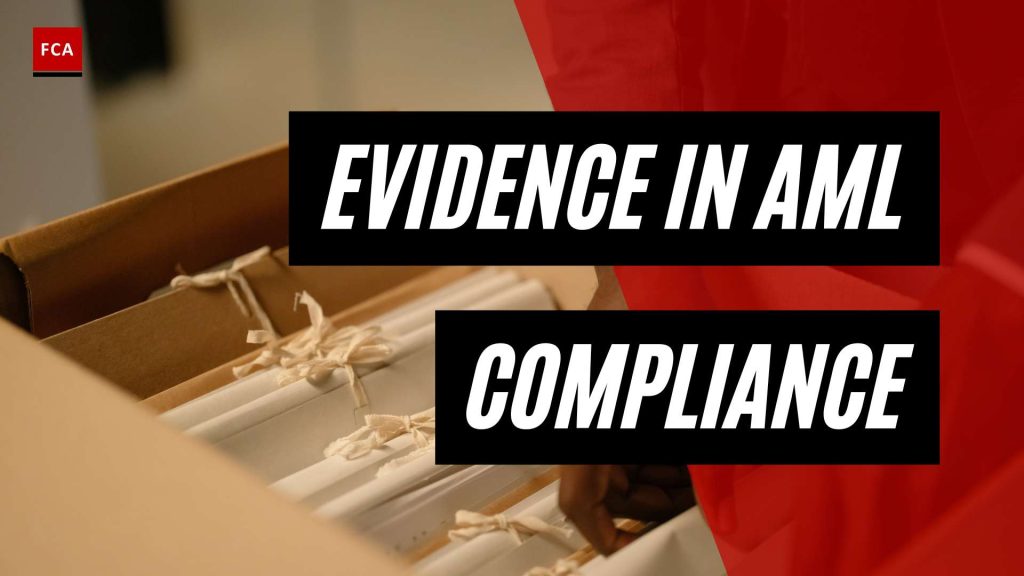Understanding Anti-Money Laundering
Anti-Money Laundering (AML) is a crucial field in the modern financial landscape, playing a critical role in combating financial crime. In this section, we delve into the basics of AML and its importance, setting the stage for further exploration of real-world ‘aml case studies.’
Basics of AML
AML refers to a set of procedures, laws, and regulations designed to prevent criminals from disguising illegally obtained funds as legitimate income. Money laundering, which involves concealing these illicit funds, can occur at any point in the financial system, from small local banks to multinational corporations, and can involve various complex financial transactions. This makes it challenging to track and trace.
Staying up-to-date with regulations is crucial for AML officers to ensure compliance with laws, regulations, and industry best practices. They must understand the latest trends and developments in the fight against money laundering to protect the organization from legal and reputational risks. AML involves several key components, such as AML transaction monitoring, AML risk assessment, AML due diligence, AML customer identification program, and AML policies and procedures.
Importance of AML
The importance of AML cannot be overstated. Financial crimes such as money laundering and terrorist financing pose greater threats to companies every year. Non-compliance can result in heavy administrative fines by regulators, emphasizing the importance of AML compliance (Sanction Scanner).
Criminals are adapting their tactics to evade law enforcement by utilizing new technologies like cryptocurrencies and engaging in trade-based money laundering. This makes it harder for AML officers to detect and prevent money laundering, necessitating ongoing education, training, and the use of AML software solutions for AML officers.
A significant challenge for AML officers is to balance compliance with business needs to ensure full compliance with laws and regulations without unduly impacting the organization’s ability to conduct business. This often requires collaboration with business leaders and leveraging technology and automation.
The importance of AML extends beyond regulatory compliance. Effective AML programs can help protect companies from becoming unwitting facilitators of financial crime, prevent reputational damage, and maintain the integrity of the financial system. To ensure effective AML practices, organizations may seek AML compliance certifications and adhere to AML best practices.
Case Studies in AML Violations
To illustrate the impact of non-compliance with anti-money laundering (AML) regulations, we shall explore several AML case studies. These cases highlight the consequences of AML violations and emphasize the importance of proper AML risk management and AML policies and procedures.
Capital One’s AML Violations
Capital One faced significant consequences for its AML violations. The bank was penalized $390 million for deliberate and careless violations of the Bank Secrecy Act, including failure to file thousands of suspicious activity reports and currency transaction reports on time (Unit21). This case serves as a reminder of the importance of maintaining rigorous AML transaction monitoring systems and reporting suspicious activities promptly.
Deutsche Bank’s AML Case
In another high-profile case, Deutsche Bank was fined $130 million by the Securities and Exchange Commission (SEC) for violating the Foreign Corrupt Practices Act and engaging in a commodities fraud scheme. The bank’s AML violations highlight the need for financial institutions to conduct thorough AML due diligence and maintain stringent AML standards to avoid such costly penalties.
BitMEX’s AML Case
BitMEX, a cryptocurrency exchange, agreed to pay $100 million in fines for falling short of anti-money laundering standards and engaging in cryptocurrency trading without regulatory authorization (Unit21). This case underscores the importance of AML compliance in the fast-growing cryptocurrency sector, and the need for robust AML software solutions to detect and prevent illicit activities.
HSBC UK’s AML Violations
HSBC UK was fined $85 million for failures in its transaction monitoring systems, which were the backbone of the bank’s anti-money laundering processes (Unit21). The penalty imposed on HSBC UK demonstrates the critical role of technology in AML compliance and the need for continuous monitoring of transactions to detect suspicious activities.
NatWest’s AML Case
NatWest (formerly Royal Bank of Scotland) was fined £265 million for failing to prevent money laundering and allowing an act of money laundering amounting to £365 million to occur. This case emphasizes the importance of a robust AML customer identification program and the potential consequences of non-compliance.
These cases provide valuable insights into the significant penalties and reputational damage that can result from AML non-compliance. They underscore the importance of implementing AML best practices and obtaining AML compliance certifications to maintain regulatory compliance and mitigate the risk of financial crime.
The Impact of AML Compliance
In the fight against financial crime, understanding the practical implications of AML compliance is crucial. This section will delve into the role of the Financial Crimes Enforcement Network and the importance of international cooperation in AML case studies.
Role of Financial Crimes Enforcement Network
The Financial Crimes Enforcement Network (FinCEN) plays a critical role in the collection of financial data under the Bank Secrecy Act (BSA). This data is invaluable in investigations related to money laundering, terrorist financing, and other financial crimes. It helps investigators identify subjects by offering details about personal information, addresses, associations, banking patterns, travel patterns, and communication methods (FinCEN).
In recognition of the crucial role that financial institution reporting plays in these investigations, FinCEN hosts an annual Law Enforcement Awards ceremony. This program acknowledges law enforcement agencies that use financial institution reporting effectively to secure successful prosecutions. It underscores the importance of timely and accurate reporting by the financial industry in combating financial crime.
Importance of International Cooperation
International cooperation is a key component of effective AML compliance. The Doha Declaration, for instance, acknowledged the need for countries to cooperate in criminal matters, share information, and provide mutual legal assistance in AML investigations to ensure the success of such studies.
The Education for Justice initiative, part of the Doha Declaration, seeks to foster a culture of lawfulness and ethics through education and awareness-raising activities. By providing educational tools and resources to enhance the knowledge and understanding of AML case studies, this initiative contributes to the prevention and deterrence of money laundering activities worldwide.
Further, the World Bank’s analysis of 290 AML case studies showed that a community-based approach has been successful in identifying and disrupting illicit financial activities. This approach involves the participation of various stakeholders, including regulatory bodies, financial institutions, and law enforcement agencies, thus enhancing the effectiveness of AML efforts.
Through a community-based approach, financial service providers can benefit from shared insights and intelligence, enhancing their abilities to detect and prevent money laundering activities. This strategy enables the identification of sophisticated financial crimes and the implementation of targeted interventions to effectively mitigate risks.
The analysis of AML case studies underscores the importance of fostering partnerships and information-sharing mechanisms among financial institutions, regulatory authorities, and other stakeholders. This cooperative approach is essential for strengthening the resilience of the financial system and addressing emerging threats posed by money laundering activities (Tookitaki).
As these AML case studies show, effective AML compliance requires a comprehensive approach that includes risk assessment, transaction monitoring, AML policies and procedures, and AML software solutions. It’s also important for AML professionals to stay updated with the latest AML best practices and obtain AML compliance certifications to effectively combat financial crimes.
Lessons from AML Case Studies
Examining different anti-money laundering (AML) case studies provides significant insights on the importance of compliance and risk management. It serves as a reminder of the severe consequences that financial institutions may face due to non-compliance. In this section, we will discuss three prominent AML case studies: Goldman Sachs and the 1MDB scandal, ING Group’s AML compliance failures, and Swedbank and the Panama Papers scandal.
Goldman Sachs and the 1MDB Scandal
Goldman Sachs, a leading global investment banking and securities firm, was heavily fined for its involvement in the 1MDB scandal. The company was penalized $2.9 billion by regulators in the US, UK, Singapore, and Hong Kong due to significant lapses in anti-money laundering controls.
This case underscores the importance of robust AML policies and procedures and demonstrates the necessity for organizations to invest in AML software solutions to effectively monitor transactions and detect suspicious activities.
ING Group’s AML Compliance Failures
ING Group, a Dutch multinational banking and financial services corporation, was fined $900 million in 2018 for failures in AML and sanctions compliance.
This case serves as a clear example of the need for a strong AML customer identification program and stringent AML due diligence processes. It also emphasizes the need for financial institutions to continually update and review their AML risk assessment protocols.
Swedbank and the Panama Papers Scandal
Swedbank, a major Nordic-Baltic banking group, was fined $386 million in 2020 for AML failures linked to the Panama Papers scandal (Youverify).
This case study highlights the importance of implementing AML best practices and the crucial role of AML transaction monitoring in detecting and preventing illicit financial transactions. It also underscores the importance of AML risk management in safeguarding a financial institution’s reputation and maintaining the trust of its customers.
These AML case studies underscore the serious repercussions of non-compliance and the necessity of maintaining robust AML procedures. They highlight the need for continuous learning, staying updated on AML regulations, and investing in AML compliance certifications. These lessons from past failures can guide financial institutions towards better compliance and risk management practices in the future.
The Future of AML Compliance
The ever-evolving landscape of financial crimes presents a series of challenges and opportunities for the future of Anti-Money Laundering (AML) compliance. As criminals adapt their tactics and leverage new technologies, AML officers and compliance departments need to stay ahead of these developments to protect their organizations and maintain integrity within the financial system.
Challenges Faced by AML Officers
Financial crimes such as money laundering and terrorist financing pose increasing threats to companies each year, and non-compliance can result in substantial administrative fines imposed by regulators (Sanction Scanner). This highlights the essential role of AML officers in maintaining compliance with laws, regulations, and industry best practices.
Criminals are increasingly using new technologies like cryptocurrencies and engaging in trade-based money laundering, which makes it harder for AML officers to detect and prevent money laundering. Staying up-to-date with these trends and developments is crucial for AML officers to protect their organizations from legal and reputational risks.
A significant challenge for AML officers is balancing compliance with business needs. This requires collaboration with business leaders and leveraging technology and automation to ensure full compliance without unduly impacting the organization’s ability to conduct business (Sanction Scanner). For more insights on this topic, explore our resources on aml risk management and aml software solutions.
Community-based Approach in AML
According to an analysis of 290 anti-money laundering (AML) case studies, the World Bank found that a community-based approach has proven successful in identifying and disrupting illicit financial activities (Tookitaki).
This comprehensive approach involves the participation of various stakeholders, including regulatory bodies, financial institutions, and law enforcement agencies. By fostering partnerships and utilizing shared insights, financial service providers can enhance their abilities to detect and prevent money laundering activities.
The World Bank’s analysis underscores the importance of collaboration and information-sharing mechanisms among financial institutions, regulatory authorities, and other stakeholders. This cooperative approach is essential for strengthening the resilience of the financial system and addressing emerging threats posed by money laundering activities.
Moving forward, adopting a community-based approach and tackling the challenges faced by AML officers will be key in maintaining the integrity of financial systems. For more information on AML compliance strategies, refer to our resources on aml best practices and aml compliance certifications.








